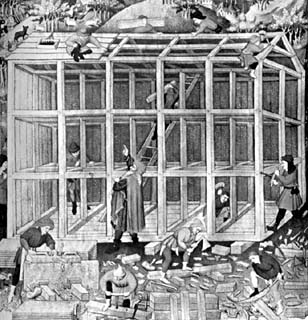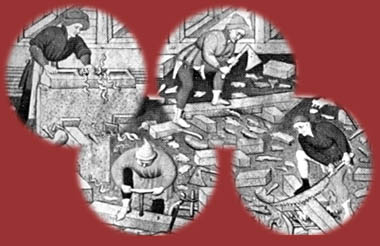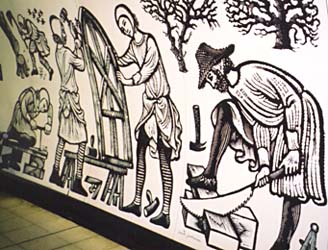
Building a house.
Source: British Library Add. MS.18850, f.15
The depiction of construction of the timber-frame for a house, in the Bedford Hours, dates from ca.1430 and is in fact intended to represent the superstructure for Noah's ark. In the foreground carpenters are at work with plane, auger, side-axe, and saw.

The Bedford Hours illustration was perhaps a source of inspiration for David Gentleman in his mural in Charing Cross Underground station.

Carpenters at work on the Eleanor Cross,
by David Gentleman
Photo © S. Alsford
The great majority of houses were built entirely or partly of wood, and most towns could provide work for a sufficient number of carpenters – whether in new construction, renovations, additions, or repairs – that they were often organized in gilds. Just as the master mason was usually the architect of a stone building, the carpenter was the master builder of a timber one. Carpenters could also find employment in building furniture, carts, and ships, and in the largest towns some were able to specialize. In particular, sawyers specialized in producing from felled trees beams and planks, using a two-person saw.

A master carpenter chastises his
workman for cutting a beam too short.
Displayed in the British Museum.
Photo © S. Alsford
In addition to masons and carpenters, the craftmen required for building a residence for a wealthy townsman would have included: plasterers (or 'daubers') to fill in the walls; tilers to lay floors and roofs; or plumbers, again for roofing in cases where lead could be afforded, or to provide gutters. Building craftsmen were not highly paid, with the exception of some successful masons, and are rarely found in the urban ruling class.